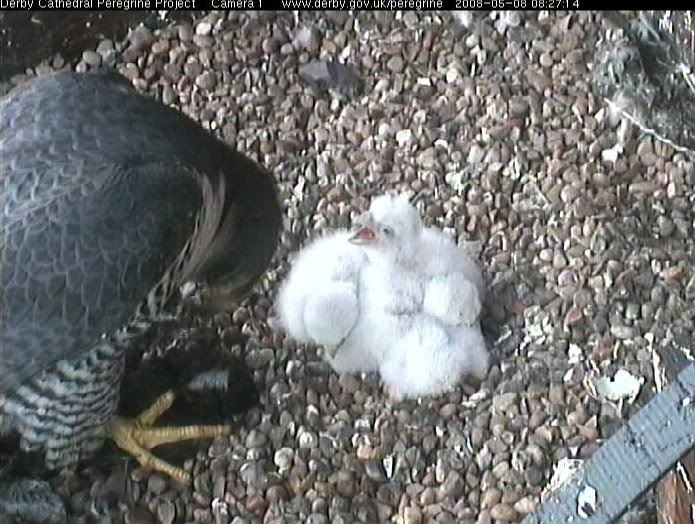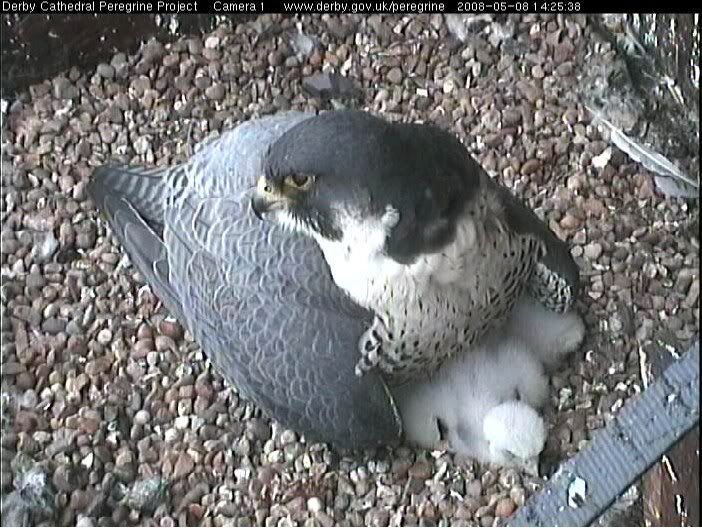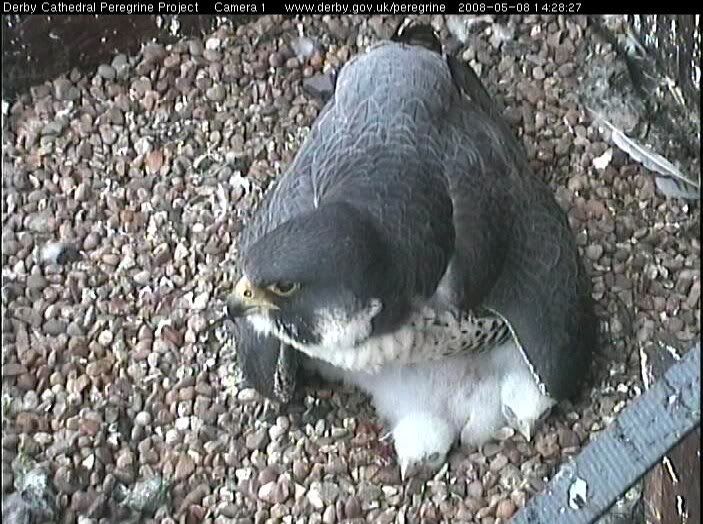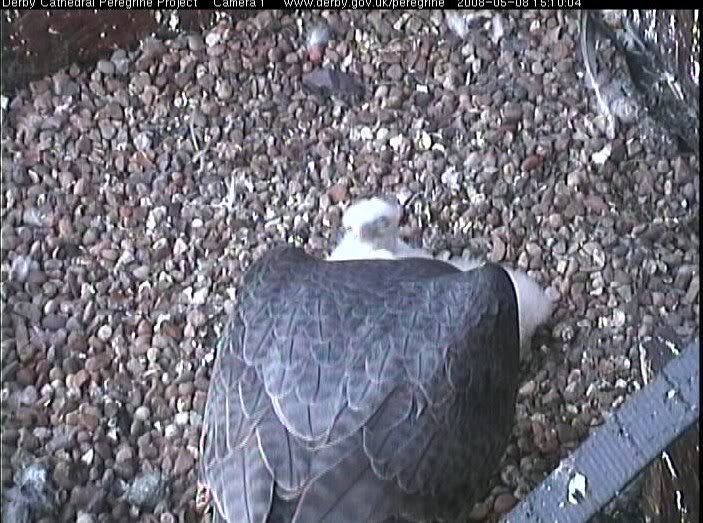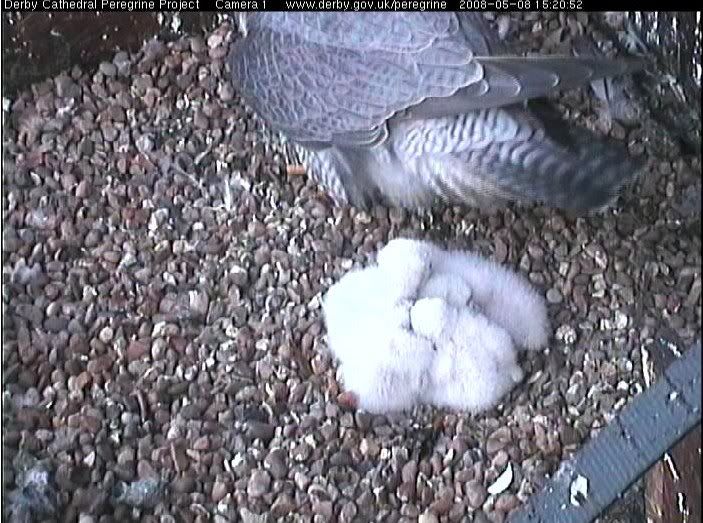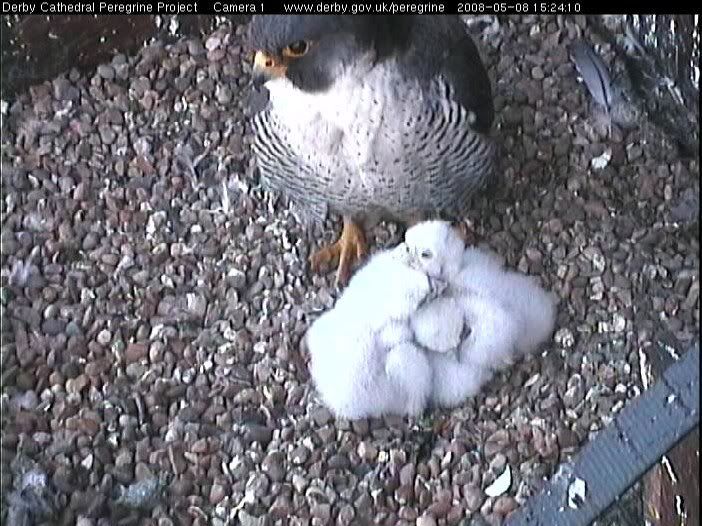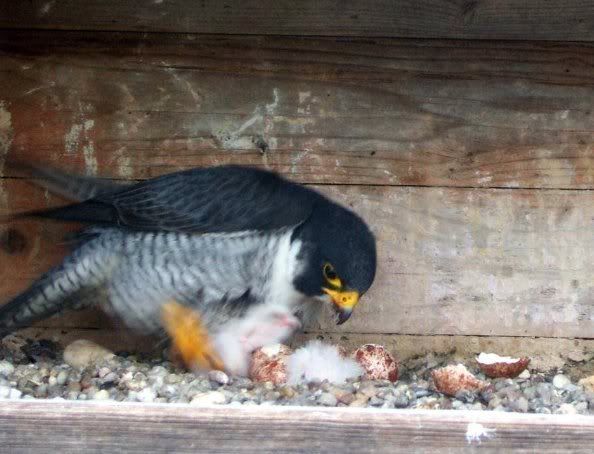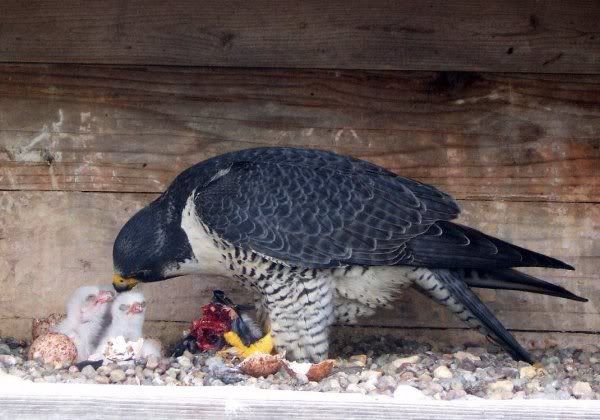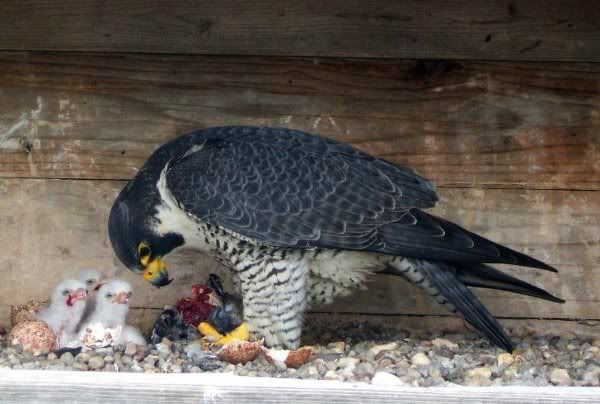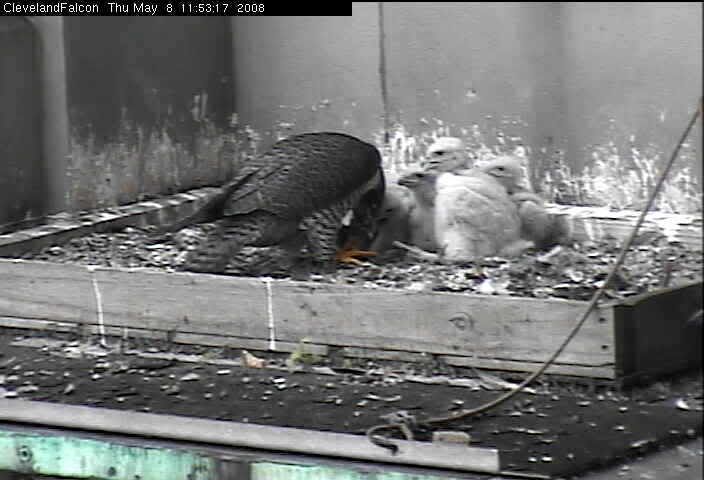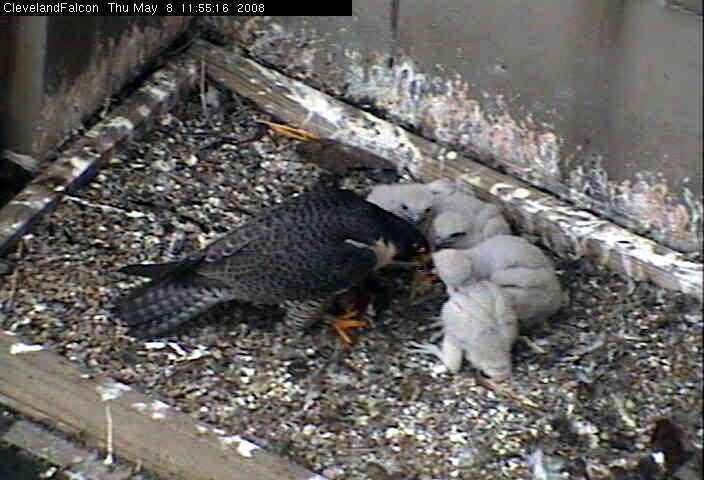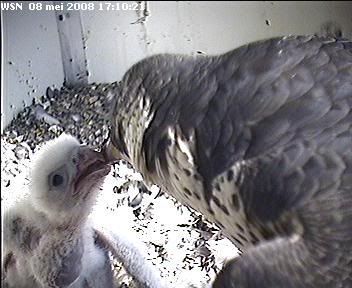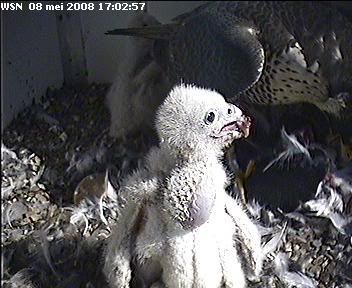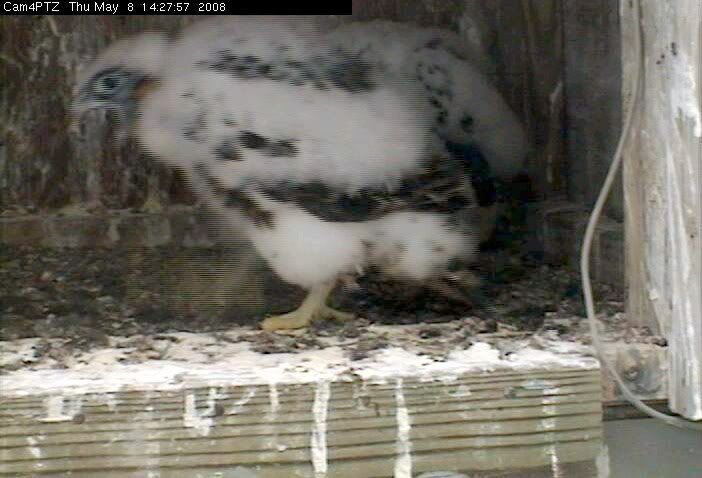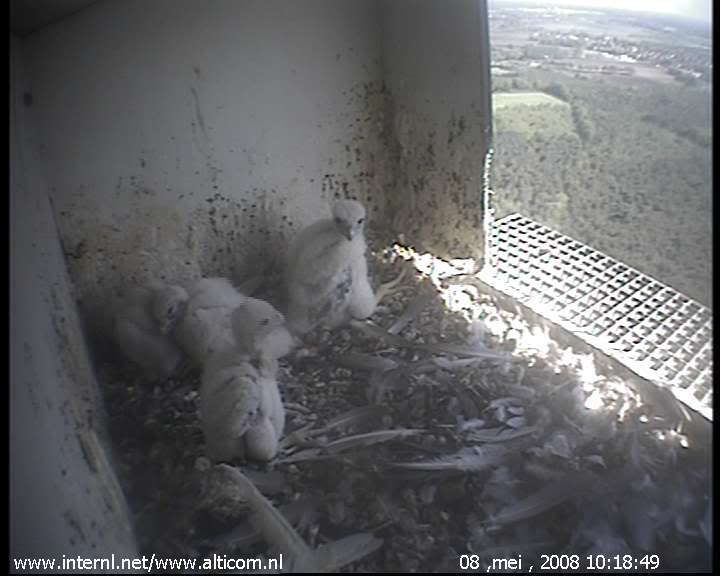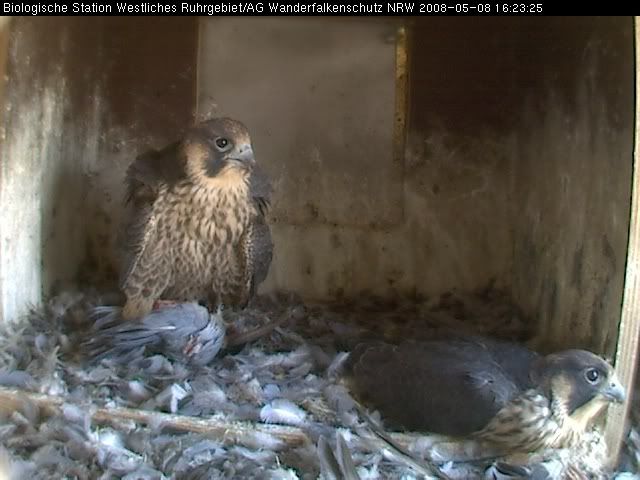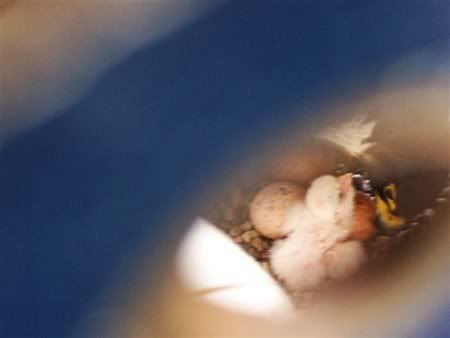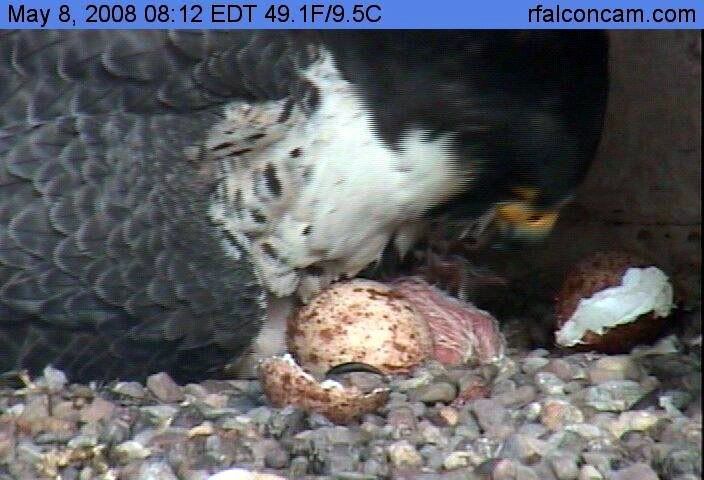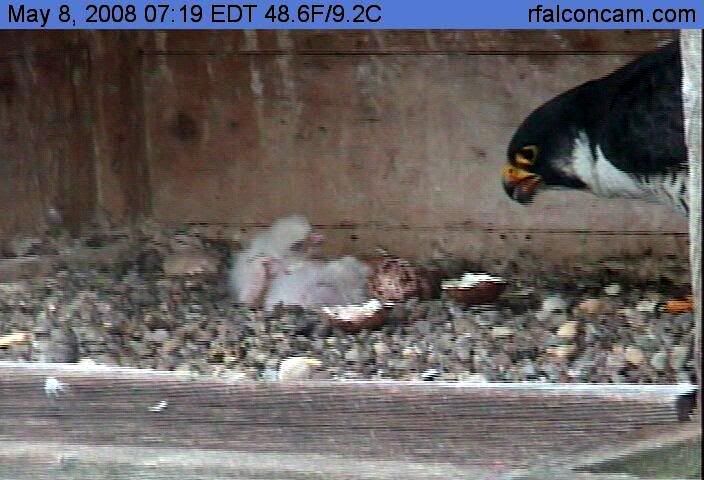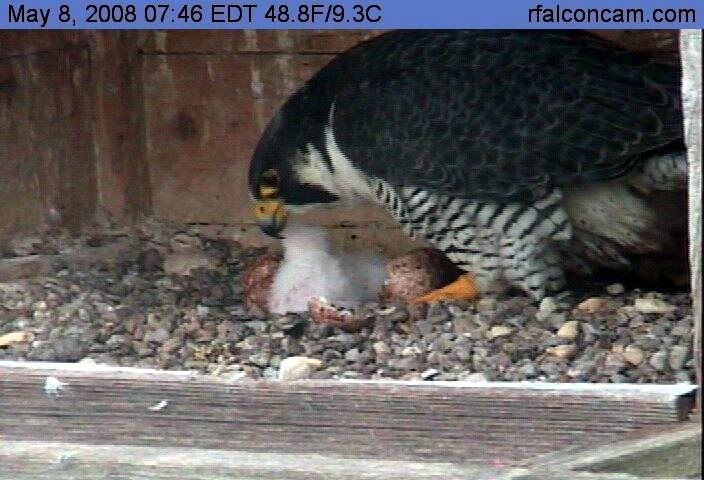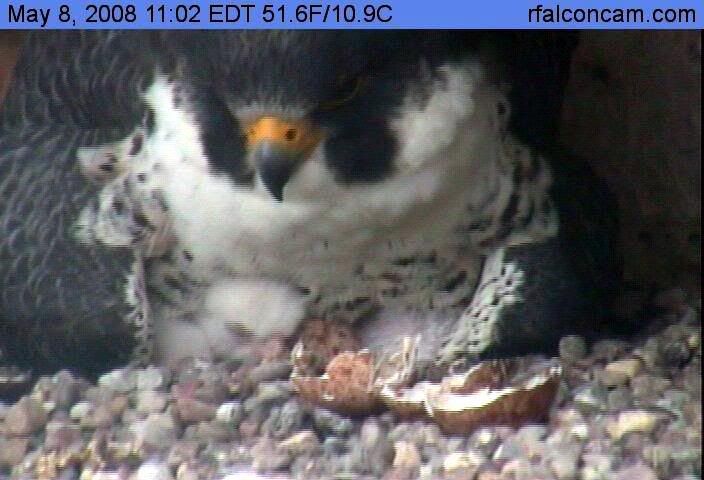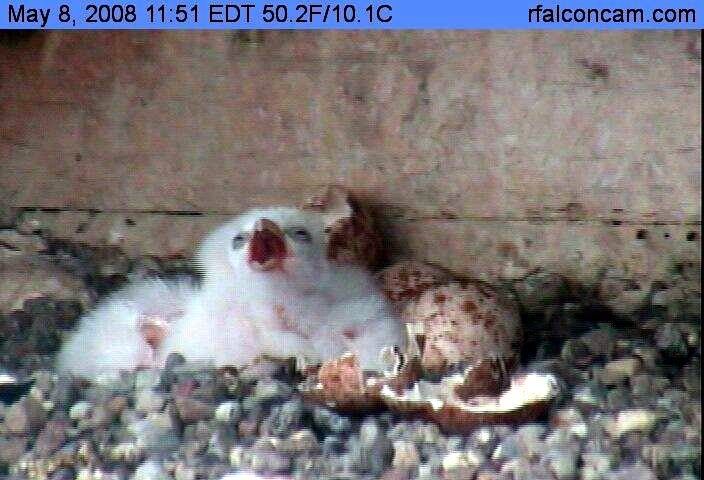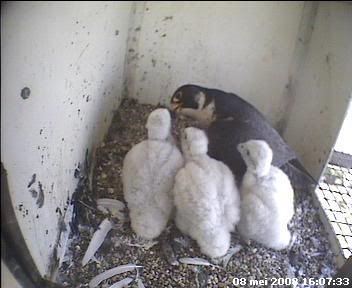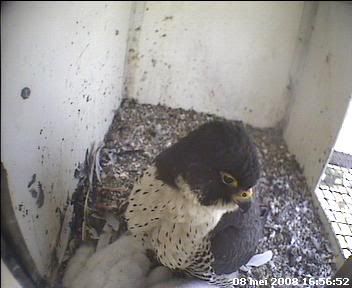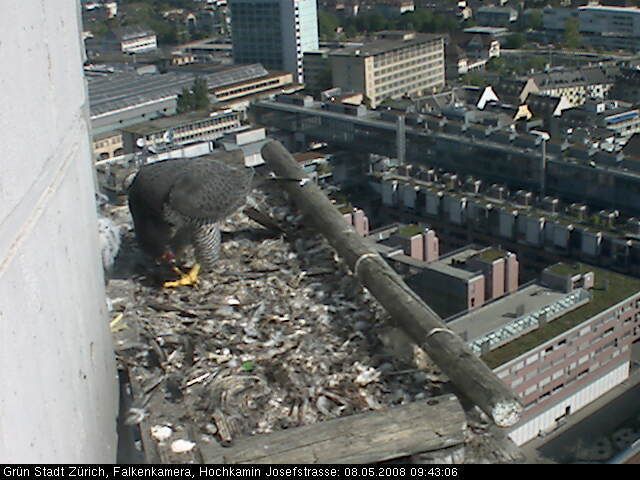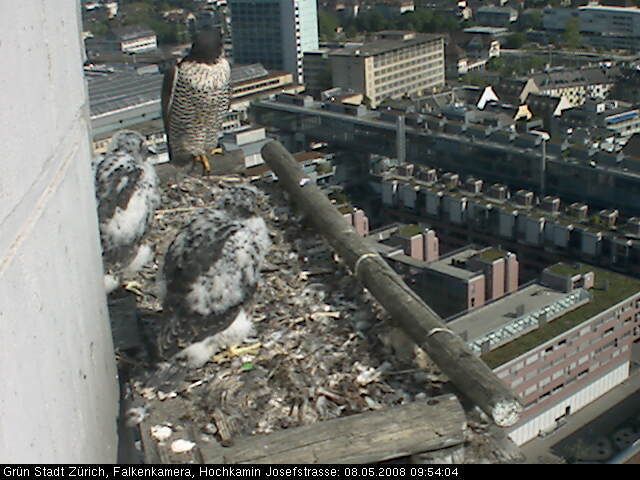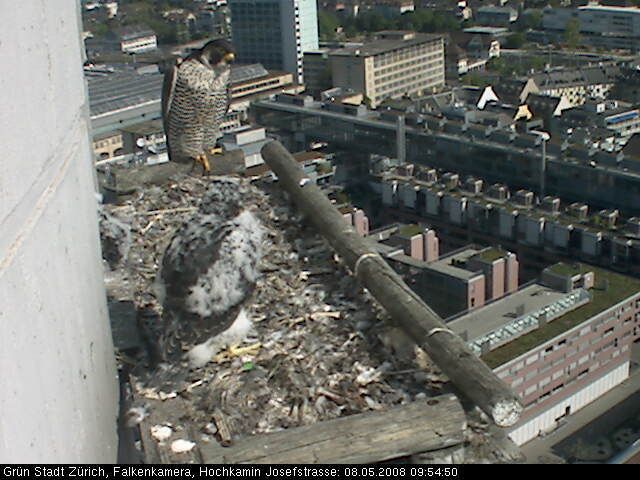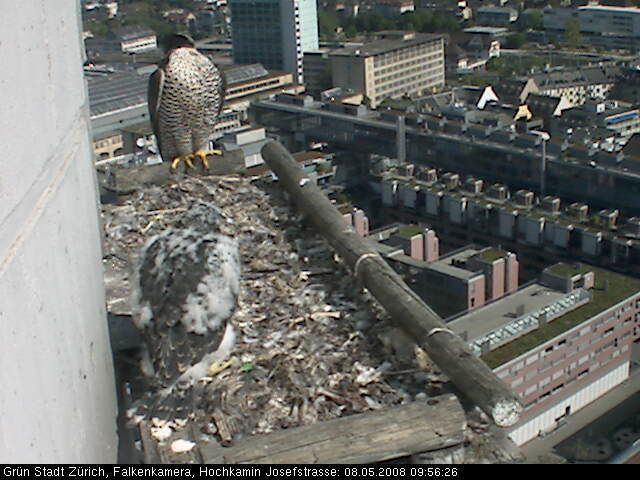I received many questions about the first feedings.
In every scrape parents start at a different time with the first feeding. Females who have their first clutch wait a long time before they start. Females however who are experiencend mothers start rather quickly with the first bite of meat. How come this difference. I think it is a matter of instinct versus personal experience. When is the first feeding necessary? There fore we have to take a look at the development within the egg.
In the embryonic development the embryo lies on top of a very big yoke. In the third day of development the extra embryonic membranes are starting to built. The infrastructure within the egg so to speak. Nutrients and oxygen have to be transported from the yoke and oxygen from the outer world to the embryo.
After the gastrulation, the development of the extra-embryonic membranes is the most important event in the early embryonic stages. It's like setting up camp. In the first 2 days oxygen exchange is possible through th eeggshelle. But when the celllayers get thicker the embryo needs a proper circulation from itself to the eggshel to get enough oxygen. And one from his foodsupply - the yolk- to his body.
Evolution has figured out an amazing way to do that.
On the third day of incubation, blood islands begin linking and form a vascular system, while the heart is being formed elsewhere. By the 58 th hour of incubation, the heart and vascular systems join, and the heart begins beating. Two distinct circulatory systems are established, an embryonic system for the embryo and a vitelline system extending into the egg. In later stages of embryonic development, there are two distinct extra-embryonic blood systems. One system, the vitelline system, transports nutrients from the yolk to the growing embryo. from the fourth day on, it oxygenates blood. The other blood system, made of allantoic vessels, is concerned with respiration and the storage of waste products in the allantois. When the chick hatches, both circulatory systems cease to function.

The three extra-embryonic membranes are formed from the primitive germ layers:
The Yolk Sac
The yolk sac surrounds the yolk and draws nourishment from it. Blood islands, which eventually form channels followed by vessels, are derived from the mesoderm. These blood vessels, the vitelline vessels, extend to connect with the ovessels coming off the heart of the embryo. The cells lying next to the yolk become more and more specialized to digest the yolk and pass its nutrients on to the neighboring vitelline circulation and thus to the embryo
The Amnion
Ectoderm and somatic mesoderm surrounding the embryo, form a protective covering over the embryo called the amnion. The inner layer of cells secretes amniotic fluid in which the embryo floats. This fluid keeps the embryo from drying out and helps protect it when the egg is jarred.
The Chorio-Allantoic Membrane
Ectoderm and somatic mesoderm form the chorion which lines the eggshell and performs gas exchange and waste elimination. The allantois is the embryo's connection to the chorion. It appears as a balloon-like structure coming off the hindgut at about day 5. It carries with it the allantoic vessels coming off the heart. The allantois grows larger as the chick grows, wraps around above the chick, and fuses with the chorion. It works together with the chorion to exchange gasses between the embryo and the outside environment. The egg shell is porous and thus allows oxygen and carbon dioxide to pass freely back and forth from the environment to the inside of the egg.
The chorio-allantoic membrane is also responsible for drawing calcium from the egg shell and carrying it back to the chick. Calcium is needed to carry on general metabolism and make bone ( ossification) . For the first 15 days the chick can absorb a sufficient amount of calcium from the yolk. But at around day 15, the formation of bones begins to accelerate and the embryo must draw calcium from the egg shell. The allantois also stores wastes (urine) once the embryonic kidneys begin to function. When the chick hatches, the chorio- allantoic membrane remains attached to the egg shell and is therefore discarded with it.
It is an amazing journey to see what is happening inside the egg. And a true miracle of life.

There is always to much yoke. For 2 reasons. The first is that the mother has put important immunoglobulines in the yoke the eyases have to consume before hatching. Because it's own immuunsystem is not working yet. The way that is developing after hatching is one other fantastic miracle I will certainly tell you about in one of the next posts.
The second is that the eyas needs a foodsupply to last for at least 48 hours. That is because most often there are other eyases hatching and the parents will not leave a hatching egg. Unless it is very late like in Derby. The eyas is very tired from 2 days intensive work getting out of the eggshell. It needs sleep and cuddles up against the warm broodpatch of it's mother or father. But it will start begging as soon as she moves. That's instinctive behaviour. They will do that even if they are not hungry: lift their little heads and scream.
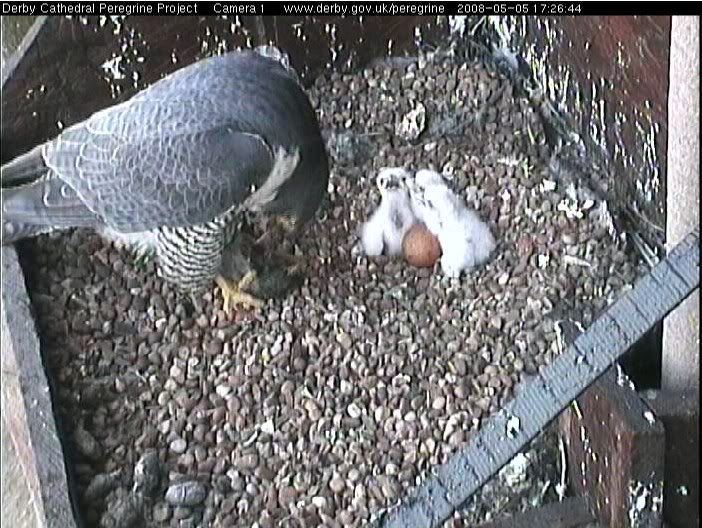
Females in their first clutch act on the collective consious of millions of years of evolution embedded in the brainstem. And handle by the book. But females who have had clutches already follow their own way. And start feeding much sooner. They know best what is good for their hatchlings. Mariah started today about 5 hours after the third one hatched, 10 hours after the first that was. So all the ways are the right ones.
One thing no one ever has to be concerned about is feeding. It's an instinct of every parent, human or avian, to feed it's child. So never worry about that. Peregrines are excellent parents. They are one of the most intelligent avians, they know very well what they're doing. They do have a kind of emotion, they can remember, they even have some kind of compassion where it comes to eyases from themselvers or even adoptive ones.
I have watched many, many peregrines and their feeding behaviour. They are very well aware of which eyas has not had enough. As long as the eyas continues begging it will get food. An eyas that does not beg will even be offered food. The parent animates them eating by chupping, load chupcalls, untill the eayas will turn away when it had enough. And even then the parents tries to feed more. So first feedings will always start within 24-48 hours.
illustration by Janet Sinn-Hanlon
